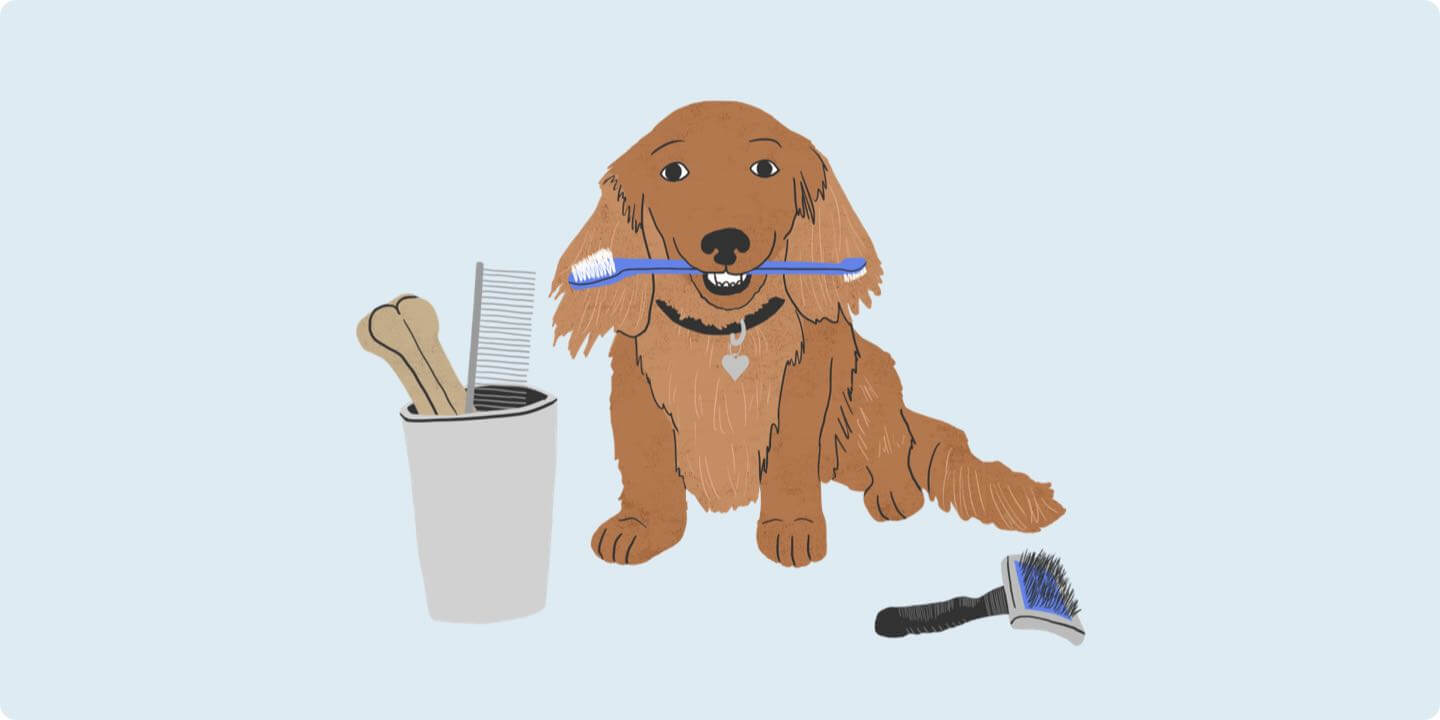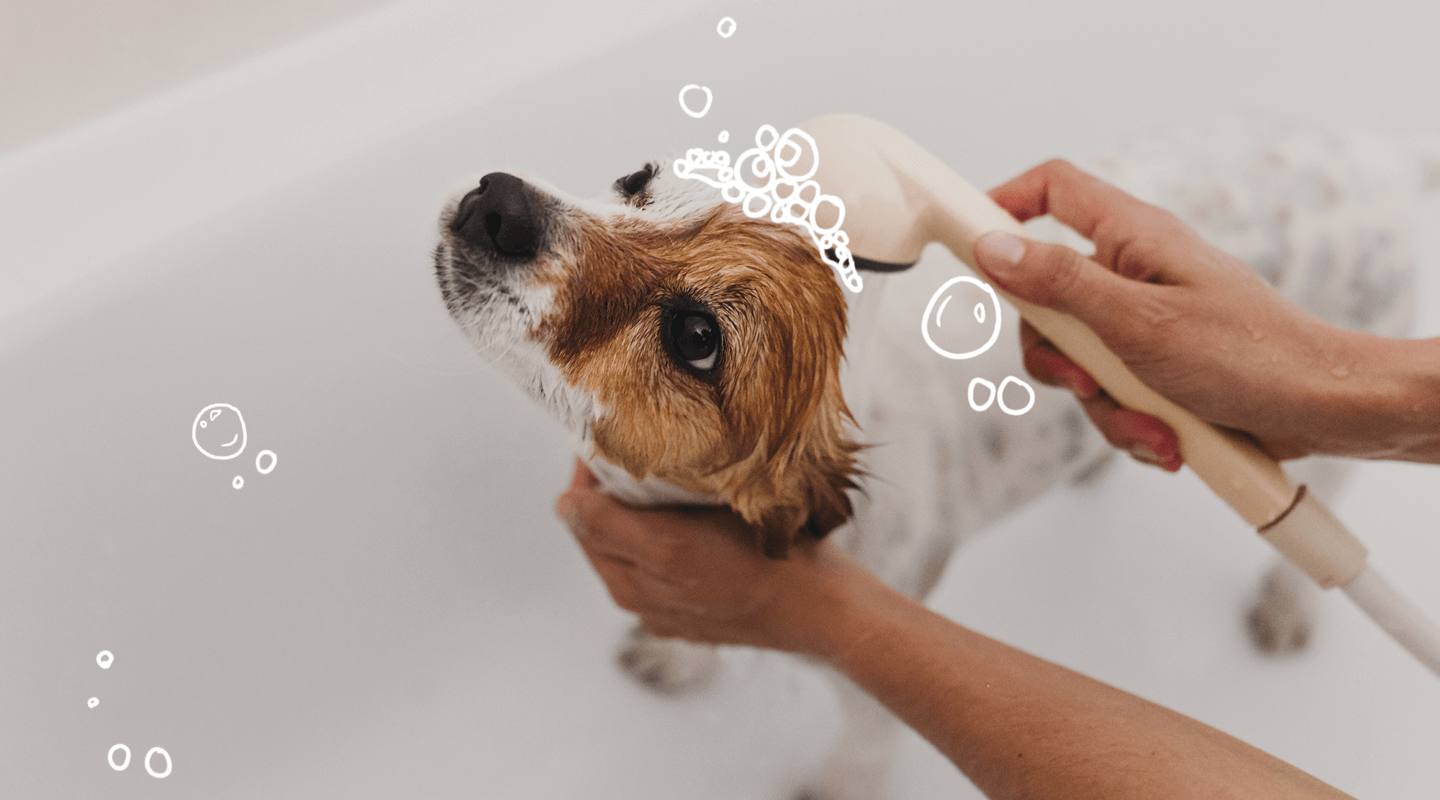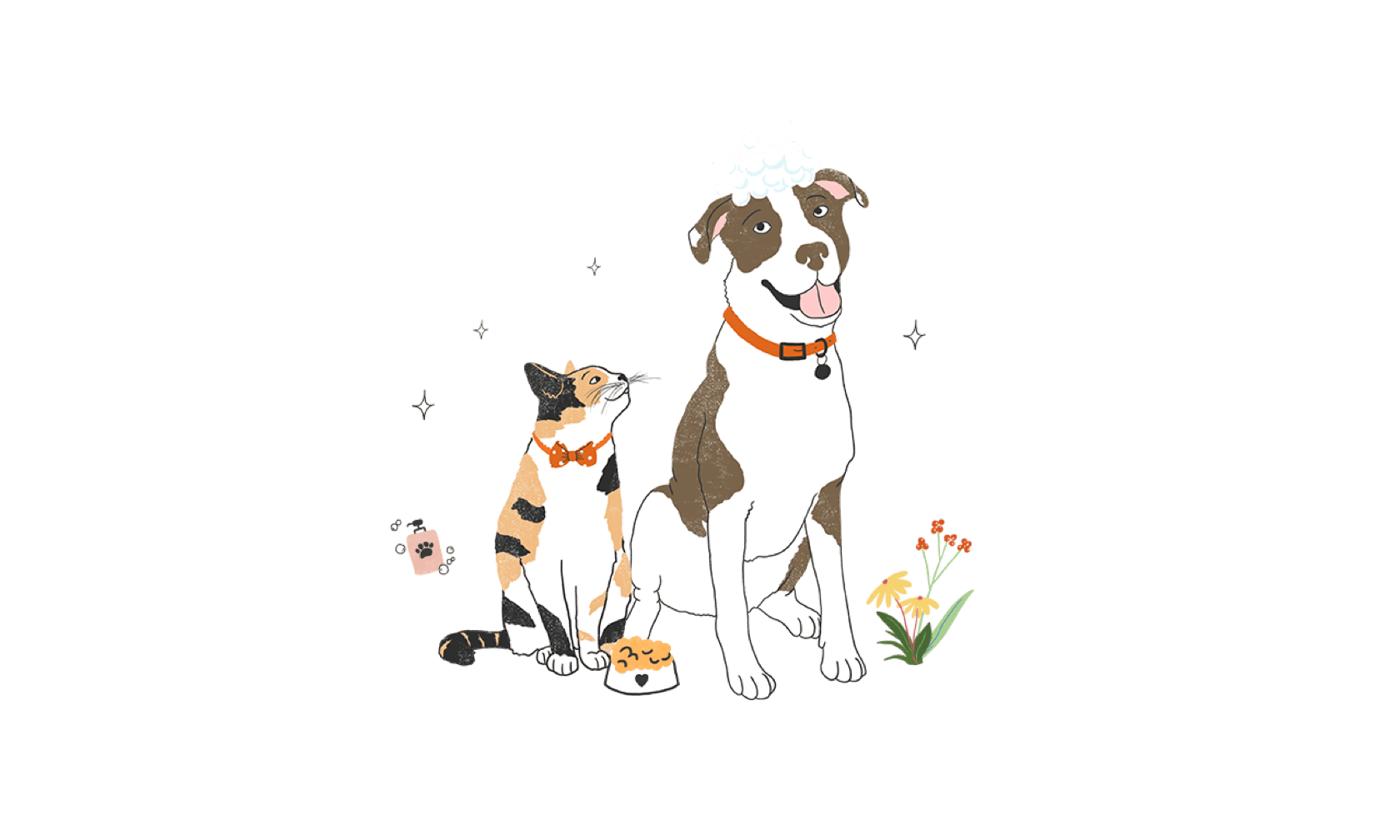Scrub-a-dub-dub, it’s time to get your pup in a tub! Regularly bathing and grooming your dog helps keep their skin healthy, their coat shiny, and makes it easy to catch any developing issues such as ear infections, skin issues, ticks and fleas, lumps, or injured nails and paw pads.
Grooming your dog doesn’t need to be difficult. Learning basic grooming skills makes it easier to extend the length of time between a professional grooming or bathing appointment, saving you time and money.
How To Groom a Dog
Grooming a dog includes brushing, bathing, tail trims, ear cleaning, and teeth brushing. For long-haired dogs, coat trims are also important. Some aspects of grooming a dog, like bathing and haircuts, are typically only necessary once in a while, but other parts of grooming your dog at home, like brushing and teeth cleaning, should happen often.
Brushing Your Dog
Daily brushing is recommended. This prevents matting, distributes the natural oils throughout your dog’s coat, and gives you a chance to check them over for any fleas, ticks, dangerous foxtail awns, and other issues like new lumps or sensitivity.
Invest in the right kind of brush for your dog’s coat:
- Short and Smooth: If your dog has a short and smooth coat, use a dog grooming mitt or wipe to get rid of dirt and excess fur. Curry brushes are also a great tool for dogs with short coats that still shed a lot.
- Long or Curly: A pin-comb and slicker brush are best for long or curly coats.
- Double-Coated: A de-shedding brush can be helpful for double-coated breeds. These kinds of brushes work best on completely dry fur.
Caring for Your Dog’s Paws
- Check your dog’s paws every day to look for cracked or injured paw pads and foreign objects like rocks, ticks, or foxtail awns.
- Keep the fur growing between your dog’s pads neatly trimmed to provide traction on slippery floors. This is best done with clippers. Ask your groomer to show you how to do this safely to prevent cuts between your dog’s pads.
- Keep your dog’s nails at a short length. Overgrown nails make walking painful, can change the bone structure in your dog’s feet, and are prone to cracking and splitting.
Bathing Your Dog at Home
How often you bathe your dog depends on their coat type, how dirty they tend to get day-to-day, and your own preferences. You don’t want to bathe your dog too often, as this can strip their coat of its natural oils. Certain breeds and dogs with certain medical conditions require more frequent bathing than others.
- Prep Your Tub
Place a non-slip mat in the bottom of the tub or sink for them to stand on and invest in a hair trap for the drain. - Brush Out Your Dog’s Coat Before You Start the Bath
Doing so removes dead fur, which saves you time and shampoo and keeps fur out of your drain. It also helps the shampoo better penetrate their coat and reach the skin. - Only Use Shampoo and Conditioners Specially Formulated for Dogs
Human hair products can strip a dog’s coat of its natural oils or cause an allergic reaction. Ask your veterinarian for their recommendation on a dog-safe shampoo. - Keep the Inside of Their Ears Dry
Many ear infections in dogs begin when water gets deep inside of a dog’s ear when swimming or during a bath. Prevent an ear infection by putting cotton balls in your dog’s ear during a bath (don’t forget to take them out after), and don’t spray or dump water in or near their ears. It can also help to rinse their ears out with an ear cleaner (specifically for dogs) after bathing or swimming. - Rinse Well
Rinse your dog’s coat thoroughly to prevent shampoo residue and build-up on their skin. - Blow-Dry Your Dog's Coat If Possible
Dogs can develop hot spots, itch, or inflammation due to trapped moisture. Thoroughly blow drying not only helps prevent these from developing, but it also helps prevent your dog’s fur from matting as it dries. - Brush Too, if You're Towel Drying
If you are letting your dog air dry, towel dry as much as you can and brush out their coat every few minutes while they are drying to prevent matting.
Keeping Your Dog’s Ears Clean
- Use a Cleaning Solution
An ear cleaning with a pet ear cleaner should be done after bathing or swimming. - Dry Their Ears
Make sure to thoroughly dry your dog’s ears after an ear cleaning. Moisture in the ear can lead to yeast and bacterial infections. Many of the pet ear cleaners also have a drying agent in them, saving you a step. - Wipe Ears in-Between Deep Cleaning
You can maintain your dog’s ears by gently wiping out their ear with a hypoallergenic wipe once weekly. - Monitor Your Dog’s Ears by Checking for Any Bad Smell, Redness, or Irritation
If your dog is constantly scratching at their ear or shaking their head, have your veterinarian check for an ear infection.

Brushing Your Dog’s Teeth
- Regularly brushing your dog’s teeth means less buildup of plaque and tartar, which could mean less frequent dental cleanings done by your veterinarian. Try to thoroughly (and gently) brush your dog’s teeth daily.
- Avoid human toothpaste — only use toothpaste specially formulated for dogs. Human toothpaste often contains ingredients that can be harmful to dogs like fluoride, and some contain xylitol, which is highly toxic to dogs.
Grooming your dog at home is important for their overall health, but it’s also a great way to include basic training in your daily routine and build a trusting relationship with your pup.
ZPC-00420R2



